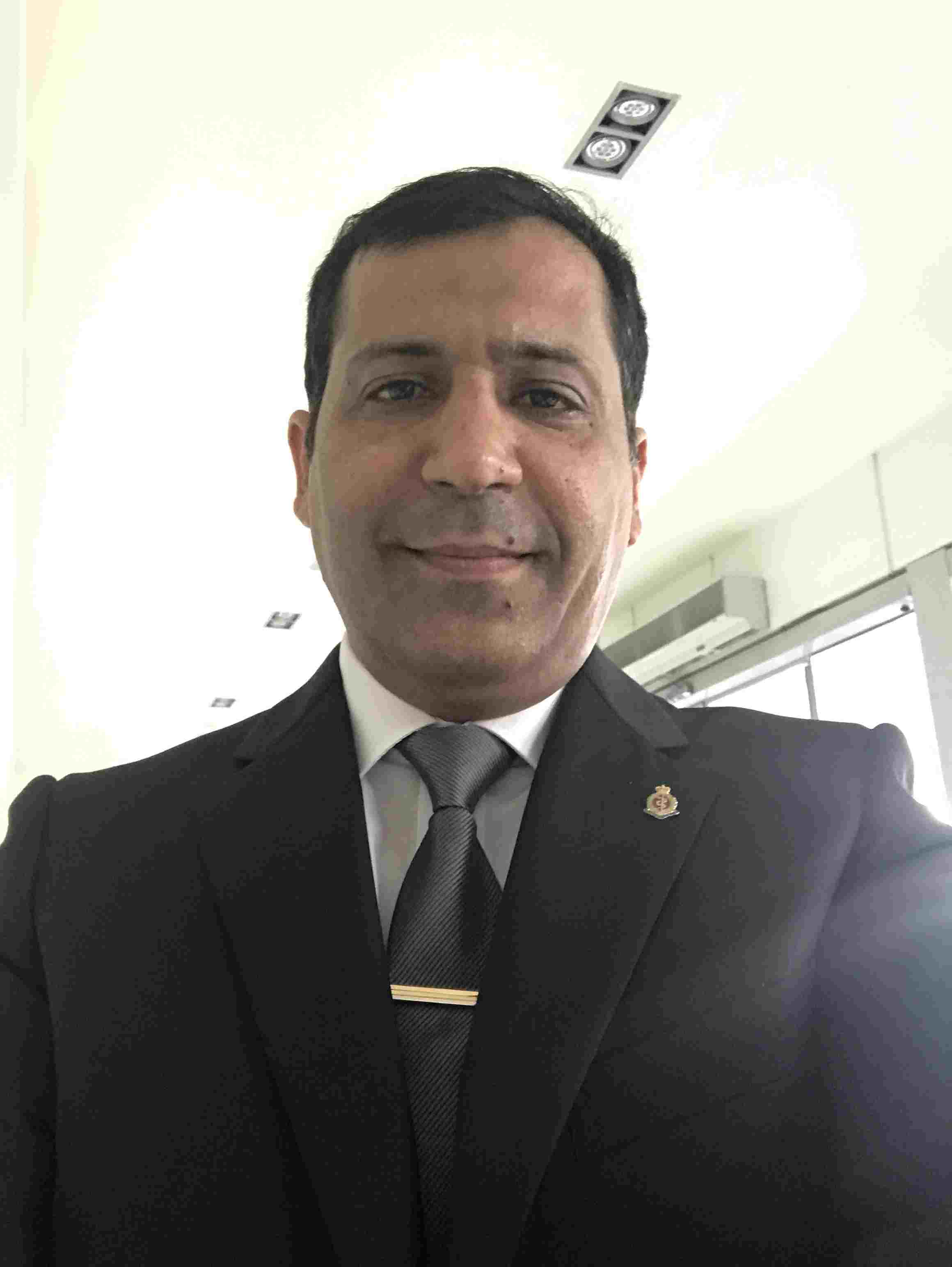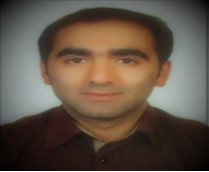Scientific Program
Keynote Session:
Title: The PRN Project – A Clinical Review and Quality Improvement Project
Biography:
Brock Dale is a clinical pharmacist with a specialty in Mental Health working within Lakes District Health Board, Rotorua Hospital New Zealand. His current role includes acute inpatient work as well as a case load of patients with in the mental health service for older person’s team. He is a current finalist for New Zealand Pharmacist of the Year 2018. He is also currently pursuing his Post Graduate Diploma in Clinical Pharmacy.
Abstract:
The mainstay of management of patients presenting agitated and aggressive in the context acute mental disorder is with symptom triggered ‘as required’ (PRN) benzodiazepines and/or antipsychotics. The present clinical review and quality improvement project identified a culture based on a reliance on heavily sedating benzodiazepines for the management of such patients by way of audit, survey and clinical review. Through an intensive educational workshop series for nursing and medical staff, and the implementation of a ‘PRN Administered’ sticker, I was able to change a culture of utilising sedation for agitation and aggression to symptom triggered medication selection. Together with appropriate medication selection and adequate documentation of response to the selected medicine we were able to improve patient care and management, notably by way of drastic reduction in physical restraint and seclusion events.
Title: Impact of pharmacists interventions on the management of patients with Type 2 Diabetes Mellitus; A Systematic Review
Biography:
Labib AL-Musawe is pursuing PhD in Pharmacoepidemiology at University of Lisbon, seeking PhD Degree. He has more than six years’ experience in pharmaceutical field. He worked as Risk management officer for Celgene hematological products through implementing safety program, also served as Senior in charge Pharmacist for chain pharmacy called Pharmacy one and Clinical pharmacist at Private Hospital. He holds a Master’s degree in Clinical pharmacy from University of Jordan and Bachelor degree in pharmacy from Philadelphia University.
Abstract:
Background: Pharmacists gaining increasing role in Type II Diabetes mellitus (T2DM) management services through collaborative practice with healthcare professionals.
Aim: To assess the Pharmacists’ interventions’ in management of T2DM and to address the effects of these interventions on different health outcomes
Method: Studies were identified by electronically searching the PUBMED/MEDLINE, NHS evidence, Science Direct, Pharmacy Abstracts, Web of Science, ClinicalTrials.gov, Trip Database, International Pharmacy Abstracts and Cochrane Library of Clinical Trials.
Randomized controlled trials, including participants whom received direct care from the pharmacists, reporting one or more of the following main outcomes: a) Clinical outcomes, b) Patients’ related outcomes, c) Healthcare Service Utilization
Results: 33 studies were included 4,952 T2DM patients, were conducted in different healthcare settings. Comparing to control groups, pharmacists groups showed significant reduction in mean change of HbA1c in twenty-four studies (-0.4% to – 2.5%) vs. (+0.43% to -1.6%), Systolic blood pressure in Fifteen studies (-20.09 mm/hg to +0.8 mm/hg) vs. (-4.4 mm/hg to +5.75 mm/hg), while Diastolic Blood pressure in twelve studies (-8.9mm/hg to +0.5mm/hg) vs. (-3.95mm/hg to +18mm/hg), Low-density lipoprotein in twelve studies (-23.20mg/dl to +1.16mg/dl) vs. (-21.65 to +5.02), high-density lipoprotein in seven studies (-5.8mg/dl to +10.44mg/dl) vs. (-2.8mg/dl to +3.48mg/dl), Total Cholesterol eleven studies (-30.54mg/dl to +8.5mg/dl) vs. (-20.10mg/dl to +3.86mg/dl) and Triglyceride in eight studies (-44.28mg/dl to +19.48mg/dl) vs. (-19.48mg/dl to +30.11mg/dl) respectively. Also it showed reduction in cardiovascular disease risk, improvement in medication adherence through decrease in self-reported non-adherence and improving in refill rate and overall health related quality of life. Improvement in patients’ knowledge and highly satisfaction rate (50-100%), high capability of identifying and resolving various drug therapy problems and considered as cost-effective.
Conclusion: These findings support the importance of pharmacists’ interventions as they have pivotal impact on improving different health outcomes in T2DM patients’.
Title: Frequency of type-2 diabetic patient opting for alternative system of medicine (Ayurveda or Homeopathy)
Biography:
Dr. Rauvi Malhotra is a Professor at SGT university He has completed B Pharm., M .
He has achieved Best Teacher award (IIMT). Awarded “Primary Mountaineer certificate”(Delhi Mountaineering Association)
Abstract:
Abstract:
Background: Diabetes is considered as a life long disorder by modern medical science. However, can be managed by changes in lifestyle and diet regulation and alternative system of medicine – Ayurveda, Homeopathy, Yoga, Naturopathy, Unani and Home remedies.
Objective: The present study aims to outline the number of patients opting for alternative system of medication of treatment for type-2 diabetes.
Methodology: 497 patients of Diabetes Mellitus with illness duration >3 months were taken and pre-structured questionnaires were filled. Details of patient viz age, sex, height, blood sugar level, HbA1C level, treatment prescribed, medication fee were recorded and later transcribed on Microscoft Office Excel for statistical analysis.
Results: Out of 497 patients, 51 patients (including male and female) opted for Ayurveda and 6 patients opted for Homeopathy; out of these patients only 4 had hypertension and only 1 had liver related problem. 100 patients changed their lifestyle and started doing yoga and exercise daily.
Conclusion: Present study concludes that the people are changing their lifestyles and switching from allopathy to other alternative treatments as less comorbidity is associated with them and are less harmful in the long run.
Title: Revisiting the increased prevalence of Clozapine induced cardiotoxicity in New Zealand and Australia and a proposal for a pragmatic cardiotoxicity monitoring guideline
Biography:
Guna Kanniah currently works as a specialist Mental Health pharmacist at the Mental Health services, Waikato District Health Board. His current research interest Clozapine related adverse effects Long acting injectable antipsychotics Psychotropics and mood stabilisers in pregnancy Forensic psychiatry new pharmacy innovations in Psychiatric services Psychopharmacotherapy Clinical Psychopharmacology Audits in Mental health services related to Psychopharmacotherapy, psychotropic prescribing and psychotropic administration Metabolic syndrome related monitoring and research.Guna Kanniah currently works as a specialist Mental Health pharmacist at the Mental Health services, Waikato District Health Board. His current research interest Clozapine related adverse effects Long acting injectable antipsychotics Psychotropics and mood stabilisers in pregnancy Forensic psychiatry new pharmacy innovations in Psychiatric services Psychopharmacotherapy Clinical Psychopharmacology Audits in Mental health services related to Psychopharmacotherapy, psychotropic prescribing and psychotropic administration Metabolic syndrome related monitoring and research.
Abstract:
Objective: To revisit and assess the prevalence of clozapine induced cardiotoxicity incidence rates, summarize diagnostic features, and evaluate monitoring procedures for safe clozapine rechallenge.
Methodology: This review included all published reports of clozapine associated cardiotoxicity using keywords as “clozapine-cardiotoxicity”, “clozapine-myocarditis”, and “clozapine-cardiomyopathy” utilising Discovery database till 2016. 5175 abstracts were reviewed preliminarily, to yield 110 reports that met criteria for inclusion.
Results of review: Clozapine-associated Myocarditis and rechallenge Incidence of early myocarditis (≤2 months) ranges from <0.1 to 1.0% and is about 10 times less 3–12 months later. Clinical diagnosis is confounded by variability in presentation and non-specificity of symptoms. Mortality involved 10–30% of affected cases. Rechallenge considerations include clozapine impact on symptomatic severity and associated disability and risk of suicidality. It’s recommended only after full clinical resolution of myocarditis and cardiac function impairment, under closely controlled conditions, with very low and slow retitration and frequently assays of lab and cardio biomarkers.
Clozapine associated cardiomyopathy and rechallenge Incidence ranges from 0.02% to 0.10% (UK) or more in Australia. Mortality has been reported at 12.5–24.0%. Rechallenge is generally not recommended. There are only three published case reports of which one experienced a re-exacerbation of cardiomyopathy.
Monitoring Cardiac Toxicity: Plausible steps include closer clinical monitoring, repeated assays of biomarkers, and echocardiographic studies, and cardiac MRI - in cases with unremarkable findings of cardiac dysfunction with echocardiography.
Conclusion: The evidence suggests clozapine-induced myocarditis and cardiomyopathy may have been underreported worldwide. The true incidence may be as high as around 3%. Identification of subclinical cardiotoxic effects will improve outcomes by earlier recognition before clinical manifestations of cardiac impairments. Emerging consensus on a pragmatic closes clinical monitoring and repeated assays of cardiac biomarkers are aimed at timely detection of cardiac toxicity, in the initial phase of treatment will be proposed.
Title: Drug related problems in Oncology ward in Vinmec Times city hospital
Biography:
Nguyen Le Trang has completed her Master of clinical pharmacy at the age of 29 years from Hanoi University of Pharmacy. She is the leader of Clinical pharmacy unit in Vinmec Times City hospital, Vietnam and in charge of Oncology Ward for 2 years. She has participated in several oral presentations in Vietnam and Asian clinical pharmacy congress.
Abstract:
Inappropriateness of prescription: So far, there has been no scientific data on the prevalence of DRP regarding Clinical pharmacists’ intervention on hospitalized cancer patients in Vietnam reported. This study was conducted to investigate the DRPs with the intervention of clinical pharmacist in Oncology ward and was to Assess the identified DRP from physicians’ perspective.
Methods: Both quantitative and qualitative methods were implemented. The study was prospectively conducted from October to December 2016. Medication profiles of 149 inpatients were reviewed to identify DRPs in physicians’ prescription. Once a DRP was identified, intervention from clinical pharmacist was proposed and prescribers’ acceptance was analyzed. A questionnaire was designed to implement in – depth interview with seven oncologists about their perception and evaluation on identified DRPs.
Results: 182 DRPs were identified in 149 in-patients, giving an average of 1.2 DRPs per patient. The most common DRPs were categorized as “Dosing” (21.9%), “Selection” (24.7%) and “Administration” (20.3%). The common DRPs were related to preventative medications (57.7%). The majority of DRPs’ significance level was moderate (48.8 %) and minor (46.6%). 52% of the suggested intervention by clinical pharmacists was accepted by prescribers. Most of interventions in “Administration” and “Drug information provision” categories were implemented. 66.7% DRPs reached the 100% oncologists’ agreement. The factors affecting physician agreement were personal experience, medication cost and availability, the convenience for health care practitioners and patients.
Conclusion: The results of this study demonstrated that clinical pharmacists in oncology ward can probably improve the quality of pharmacotherapy. Greater understanding of DRPs from physicians’ perspective will enable the appropriate management of DRPs.
Title: Designer rhamnolipid production
Biography:
Till Tiso has completed his PhD in 2016 at RWTH Aachen University. After his Postdoctoral studies at RWTH Aachen University and a couple of research stays at Imperial College, London and CIB-CSIC, Madrid, he is now a Research group Leader at the institute of applied microbiology (iAMB) at the RWTH Aachen University. He has published more than 10 papers in reputed journals.
Abstract:
Title: What drives intentional overdose with nonprescription drugs? A cross-sectional study
Biography:
Al Kubaisi is a post-gradute researcher in his final year of PhD program in Public Health from Gloucestershire University, UK. He awarded his master degree, Excellent with First Honours, in Public Health (MPH) from Hamadan bin Mohamed Smart University, Dubai during the academic year 2010- 2012. He attended his under graduate school at the University of Baghdad where he received his Bachelor degree in Science of Pharmacy in 1996. He spent ten years working as a pharmacist in UAE. His research’s interest is in self-medication practice and in the use of non-prescription drugs by university’s students. For example, investigating students’’ behavior towards reading the drug information leaflets. Recently, he developed and evaluated an Educational Intervention designed for modifying university students’ practice, knowledge, awareness and attitude in favor of responsible self-medication
Abstract:
Background: Use of over-dosage of Non- Prescription Drugs (NPD) among university students is a serious public health issue. However, there are no extensive studies that measured the prevalence of taking more than the recommended dose of NPD and/or identified the risk associated with this behavior among university students.
Objectives: This study was undertaken to assess the prevalence and associated risks of self -over-dosage with NPDs in university students in United Arab Emirates (UAE).
Methods: A cross-sectional survey-based study was conducted from January to April 2014, among 2875 students in three randomly selected universities. A structured and validated questionnaire was used to collect the responses of the students. SPSS version 20 was used to analyze the data.
Results: Out of 2875 students, only 2,355 surveys were fully answered, returned back and included in the present study. Of 2,355, more than half (1,348; 57.2%) the participants reported using ONPD in the past 90 days before conducting the study and were asked to complete the survey. Only 290 (22%) of a total 1348 participants reported taking more than the recommended dose of Oral NPD in the previous three months before conducting the study. Analgesic/antipyretic (223, 16.5%) and anti-allergic (67, 4.9%) drugs were more than other classes of the ONPD, reported to be taken in a dose more than the recommended dosage The most common justifications for taking more than the recommended dose of ONPD among respondents were severe symptoms (6%), the belief that the recommended dose would not be sufficient to relieve the symptom (5%), the belief that a stronger dose would relieve the symptoms faster (11%), and previous experience (4%).Our results identified three risk factorsfor taking more than the recommended dose of NPD. High frequently drug-users of daily use (OR = 3.494, 95% CI: 1.677-7.279) (p < 0.001),and students from non-medical colleges had higher odds of taking more than the recommended dosage as compared to students from medical colleges(OR = 1.486, 95% CI: 1.060-2.085, p value< 0.05).Furthermorere, participants with a polypharmacybehavior had higher odds of taking over-dosage of ONPD than single NPD users (OR =1.918, 95% CI: 1.440-2.555) (p < 0.001).
Conclusion: There are a sizable proportion of university students that use over-dosage ofNPD, but it is more serious issue when it comes to non- medical student.There is a need for educational programs designed to increase awareness among all university students and to motivate them not to use over dosage of NPD. Further studies are also required to investigate additional explanatory variables that could influence the practice of over dosage with NPD.
Oral Session 1:
- Clinical Pharmacy | Clinical Pharmacy and its Role in Treatment | Clinical Pharmacy and Drug Reactions | Pharmacists in Healthcare System | Pharma Research and development

Chair
Guna Kanniah
Waikato Hospital
New Zealand

Co-Chair
Nikoleishvili E
The University of Georgia
Georgia
Title: The PRN Project: A Clinical Review and Quality Improvement Project
Biography:
Brock Dale is a clinical pharmacist with a specialty in Mental Health working within Lakes District Health Board, Rotorua Hospital New Zealand. His current role includes acute inpatient work as well as a case load of patients with in the mental health service for older person’s team. He is a current finalist for New Zealand Pharmacist of the Year 2018. He is also currently pursuing his Post Graduate Diploma in Clinical Pharmacy.
Abstract:
The mainstay of management of patients presenting agitated and aggressive in the context acute mental disorder is with symptom triggered ‘as required’ (PRN) benzodiazepines and/or antipsychotics. The present clinical review and quality improvement project identified a culture based on a reliance on heavily sedating benzodiazepines for the management of such patients by way of audit, survey and clinical review. Through an intensive educational workshop series for nursing and medical staff, and the implementation of a ‘PRN Administered’ sticker, I was able to change a culture of utilising sedation for agitation and aggression to symptom triggered medication selection. Together with appropriate medication selection and adequate documentation of response to the selected medicine we were able to improve patient care and management, notably by way of drastic reduction in physical restraint and seclusion events.
Title: Impact of pharmacists interventions on the management of patients with Type 2 Diabetes Mellitus; A Systematic Review
Biography:
Labib AL-Musawe is pursuing PhD in Pharmacoepidemiology at University of Lisbon, seeking PhD Degree. He has more than six years’ experience in pharmaceutical field. He worked as Risk management officer for Celgene hematological products through implementing safety program, also served as Senior in charge Pharmacist for chain pharmacy called Pharmacy one and Clinical pharmacist at Private Hospital. He holds a Master’s degree in Clinical pharmacy from University of Jordan and Bachelor degree in pharmacy from Philadelphia University.
Abstract:
Background: Pharmacists gaining increasing role in Type II Diabetes mellitus (T2DM) management services through collaborative practice with healthcare professionals.
Aim: To assess the Pharmacists’ interventions’ in management of T2DM and to address the effects of these interventions on different health outcomes
Method: Studies were identified by electronically searching the PUBMED/MEDLINE, NHS evidence, Science Direct, Pharmacy Abstracts, Web of Science, ClinicalTrials.gov, Trip Database, International Pharmacy Abstracts and Cochrane Library of Clinical Trials.
Randomized controlled trials, including participants whom received direct care from the pharmacists, reporting one or more of the following main outcomes: a) Clinical outcomes, b) Patients’ related outcomes, c) Healthcare Service Utilization
Results: 33 studies were included 4,952 T2DM patients, were conducted in different healthcare settings. Comparing to control groups, pharmacists groups showed significant reduction in mean change of HbA1c in twenty-four studies (-0.4% to – 2.5%) vs. (+0.43% to -1.6%), Systolic blood pressure in Fifteen studies (-20.09 mm/hg to +0.8 mm/hg) vs. (-4.4 mm/hg to +5.75 mm/hg), while Diastolic Blood pressure in twelve studies (-8.9mm/hg to +0.5mm/hg) vs. (-3.95mm/hg to +18mm/hg), Low-density lipoprotein in twelve studies (-23.20mg/dl to +1.16mg/dl) vs. (-21.65 to +5.02), high-density lipoprotein in seven studies (-5.8mg/dl to +10.44mg/dl) vs. (-2.8mg/dl to +3.48mg/dl), Total Cholesterol eleven studies (-30.54mg/dl to +8.5mg/dl) vs. (-20.10mg/dl to +3.86mg/dl) and Triglyceride in eight studies (-44.28mg/dl to +19.48mg/dl) vs. (-19.48mg/dl to +30.11mg/dl) respectively. Also it showed reduction in cardiovascular disease risk, improvement in medication adherence through decrease in self-reported non-adherence and improving in refill rate and overall health related quality of life. Improvement in patients’ knowledge and highly satisfaction rate (50-100%), high capability of identifying and resolving various drug therapy problems and considered as cost-effective.
Conclusion: These findings support the importance of pharmacists’ interventions as they have pivotal impact on improving different health outcomes in T2DM patients’.
Title: Frequency of type-2 diabetic patient opting for alternative system of medicine (Ayurveda or Homeopathy)
Biography:
Ravi Malhotra is a Professor at SGT university He has completed B Pharm., M .
He has achieved Best Teacher award (IIMT). Awarded “Primary Mountaineer certificate”(Delhi Mountaineering Association)
Abstract:
Background: Diabetes is considered as a life long disorder by modern medical science. However, can be managed by changes in lifestyle and diet regulation and alternative system of medicine – Ayurveda, Homeopathy, Yoga, Naturopathy, Unani and Home remedies.
Objective: The present study aims to outline the number of patients opting for alternative system of medication of treatment for type-2 diabetes.
Methodology: 497 patients of Diabetes Mellitus with illness duration >3 months were taken and pre-structured questionnaires were filled. Details of patient viz age, sex, height, blood sugar level, HbA1C level, treatment prescribed, medication fee were recorded and later transcribed on Microscoft Office Excel for statistical analysis.
Results: Out of 497 patients, 51 patients (including male and female) opted for Ayurveda and 6 patients opted for Homeopathy; out of these patients only 4 had hypertension and only 1 had liver related problem. 100 patients changed their lifestyle and started doing yoga and exercise daily.
Conclusion: Present study concludes that the people are changing their lifestyles and switching from allopathy to other alternative treatments as less comorbidity is associated with them and are less harmful in the long run.
Title: Use of automated high-throughput bioassaying and phenotyping for identification of biostimulants and studies of their mode of action
Biography:
Lukas Spichal has completed his PhD at the age of 27 years from Palacky University in Olomouc, Czech Republic. He is the senior reseacher of Centre of the Region Hana for Biotechnological and Agricultural Research. He has published more than 55 in impacted journals (with over 1000 citations, h-index 17) and 3 book chapters. He is highly interested in applied aspects of science and is (co)author of 18 granted patents. He is involved in commercialization activities and collaboration with industrial partners, mainly with agrochemical companies.In 2011 he established and is CEO of a spin-off company Agro BioChem, Ltd.
Abstract:
A complex methodologic pipe-line as a tool for identification of new biostimulants as well as studies of their potential mode of action using automated high-throughput approaches will be presented. The pipe-line consists of sequence of automated assays determining the effect of a biostimulants on different traits in one run, including overall Arabidopsis thaliana performance under different growth conditions and the response to different abiotic stress treatments. Using transgenic plants harbouring plant hormone responding markers potential mode of action is studied in the following step. The next approach combines various methods of automated, non-destructive and simultaneous analyses of plant growth, morphology and photosystem efficiency using RGB and chlorophyll fluorescence imaging (CFIM) sensors. The translation of the use of biostimulants into the crops is finally studied using crop representatives such as maize, wheat, barley, rapeseed and tomato. The presented advanced integrative system allows performing large screening campaigns of biostimulants followed by studies of their potential mode of action and applicability in crops through collecting a huge amount of automatically analysed data of quantitative plant phenotyping traits.
Title: The compatibility of halal with good agricultural practices
Biography:
Dr. Jawad Alzeer is a senior scientist at Zurich University. Alzeer attended college at Karachi University, Pakistan, earning a B.Sc. in Chemistry, M.Sc. in Organic Chemistry. In 1996, he received his PhD in Organic Chemistry from the Swiss Federal Institute of Technology (ETH) Zurich. Following a stay at Hoffmann La Roche, he became a Research Associate at Michigan University and the University of Zurich. From 2009 to 2010 worked as a senior scientist at Swiss health care company, Lipomed and from 2010 to 2012 he was an Assistant Professor at Palestine Polytechnic University. He is currently a director of Swiss Scientific Society for Developing Countries and a Senior Scientist at the University of Zurich focused on drug discovery, rational use of natural products and tackling halal issues in the field of pharmaceuticals and food.
Abstract:
Food and agriculture are fundamental to our survival and play a very important role in our daily life. They act as a source of energy and provide us with diverse building blocks. Consumers’ attitudes towards food and agriculture are changing based on regional, cultural and religious influences. Halal production of food and agriculture is emerging as one of the most important issue, and hold a leading position in the global business today. The main objective is to ensure that process and ingredients are absolutely clean, pure and comply with Islamic principles. Hygiene and cleanliness are strongly emphasized in Halal production and it includes every aspect of individuals, equipment and ingredients involved during production. A Transparent system of halal auditing has been developed to ensure zero suspicion of a manufactured product that comply with all halal requirement. The future demand for halal product is strong and is creating a strong presence in developed and developing countries. Main issues in halal production, certifications and its compatibility with good agricultural practices standard will be presented.
Title: A different approach: Biostimulants in seed treatment as plant defence elicitors against insects
Biography:
Jucelaine Haas has completed her PhD at the age of 34 years from the Federal University of Technology – Parana (UTFPR), Brazil. She is the Professor of Entomology at UTFPR.
Abstract:
The definition for biostimulants is fluid and complex, but it is agreed that biostimulants are substances from biological origin that improves plant productivity. These substances may be applied to the soil or directly to the plant and they stimulate nutrient uptake/efficiency and tolerance to abiotic stress, leading to better crop quality and yield. In this process, biostimulants can affect gene expression creating a long-term effect. Even though these substances are not directly related to enhancing plant resistance to biotic stress caused by pathogens and herbivores, this aspect is yet to be explored. As some biostimulants can regulate gene expression and influence plant metabolism, they might as well induce the production of physical barriers or metabolites that negatively affect harmful organisms. There is some information regarding how pathogens are affected, but insect pests have been mostly set aside. So far, we know that different fertilizer treatments lead the plant to produce chemicals that affect pests and may even attract natural enemies; also, that plants developed from cabbage seeds treated with chitosan negatively impact Plutella xylostella. Considering all these facts, some biostimulants could be used for priming plants against insect pests, working as a vaccine: primed plants show fast/strong activation of defence responses when challenged by biotic stress. This line of research could result in better understanding of how biostimulants affect insect-plant interactions. In a more practical view, it could lead to new uses for existent commercialised products or even to the development of new ones that could take part in a more sustainable and clean agriculture.
Keynote Session:
Title: Importance, barriers and future of Clinical Pharmacy development in Georgia
Biography:
Nikoleishvili Elza is a Medical Doctor –Pediatrician. She has 13 years clinical experience and more than 10 years of teaching experience. She has completed her PhD at the age of 37 years from Tbilisi State Medical University and Postdoctoral Studies from faculty of Medicine, Tbilisi State Medical University, Georgia. She is the Head of Pharmacy department of The School of Health Sciences and Public Health of The University of Georgia. She has published more than 45 papers in reputed journals. She has participated in various international congresses and workshops. At present she is Professor at The University of Georgia.
Abstract:
Around the world, the role of the pharmacist has been rapidly evolving from a traditional role in drug distribution to expanded clinical roles such as making medication-related recommendations to other members of the health care team, identifying drug therapy problems, assessing patients and prescribing medications, and administering medications s. Clinical pharmacy services are firmly established in many countries, associated with reduced adverse drug events, medication errors, patients’ length of stay, mortality rates, and costs (Anderson & Schumock, Bond & Raehl, De Rijdt, Willems, & Simoens, ; et al.,). A core element of clinical pharmacy is to influence rational prescribing and promote quality use of medicines. The statements developed by the International Pharmaceutical Federation (FIP, 2009) strategically frame the role of clinical pharmacists regarding their influence on rational prescribing. According to Bulletin of the World Health Organization 2018 in high-income countries, clinical pharmacy services have been shown to improve quality use of medicines and reduce drug-related problems, hospital readmissions and health-care expenditures. Implementation of clinical pharmacy services could faces various challenges, such as: (i) lack of clinically qualified pharmacists; poor pharmaceutical literacy among patients; under-utilization of research evidence due to underdeveloped health-care systems (iv) restrictions in medicines regulatory capacity; (v) poor availability of essential medicines; and (vi) limitations in accessing high quality medicines ( Brazinha L, Fernandez-Llimos F, Laura V Minard, Heidi Deal, Frnandes O, Goman SK,at al ). Over the last two decades, the Government of Georgia has initiated several reforms in the health sector to move away from the highly centralized Semashko model inherited from the Soviet Union. However, Implementation of clinical pharmacy is in its infancy in Georgia. 2017 in Pharmacy department at The University of Georgia was created Master program of Clinical Pharmacy. We hope this program will play important role for implementation and development clinical pharmacy in Georgia.
Oral Session 1:
- Workshop
Title: Ganoderma lucidum as a biological fungicide – Perspectives
Biography:
Jucelaine Haas has completed her PhD at the age of 34 years from the Federal University of Technolog – Parana (UTFPR), Brazil. She is the Professor of Entomology at UTFPR.
Abstract:
Ganoderma lucidum is a cultivated macrofungus that has been extensively used for promoting health and longevity in China and other Asian countries. It is a large, dark and woody mushroom, commonly known as reishi or lingzhi. G. lucidum is mainly composed of polysaccharides, peptidoglycans and triterpenes; and more than 200 secondary metabolites have already been isolated from its fruiting body and mycelium. These components exhibit a wide range of bioactivities, including anti-inflammatory, antitumorigenic, antibacterial and antifungal. Some of these metabolites can also have a role in crop protection, even though this line of research has not been much explored. In this workshop, we will talk about how G. lucidum could be used in agriculture as a biological fungicide to control the powdery mildew, Erysiphe difusa, in soybean crops and the advances we are making in this area using biotic elicitors.













